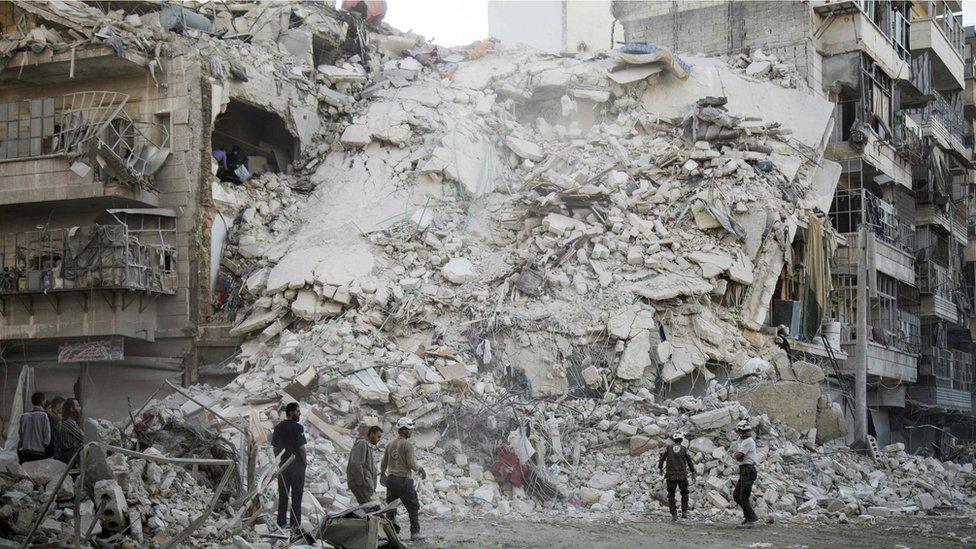Russia's naval task force: Power play or just theatre?
- Published
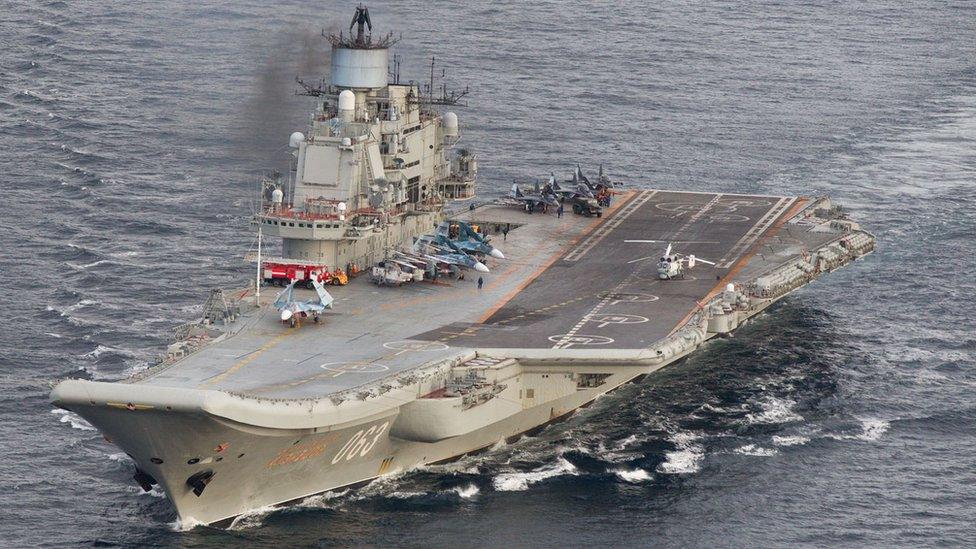
Admiral Kuznetsov: A Norwegian reconnaissance plane photographed the ship off Andoeya Island on Monday
A Russian aircraft carrier and other warships will soon head towards the UK.
The naval task force from Russia's Northern Fleet will proceed past the British Isles, down to Gibraltar, and through the Mediterranean Sea to join the Russian combat mission in war-torn Syria.
Why is Russia enhancing its naval presence off Syria now? The answer is part capability and part theatre.
Russia has already flexed its naval power during its operations in Syria, with warships firing cruise missiles at land targets from both the Caspian Sea and the Mediterranean. But naval involvement has never been a critical factor. Most of the targets hit could equally have been struck with aircraft either based in Syria or flying from bases in Russia itself.
To a large extent Russia's naval activity has been a display - a demonstration of Moscow's capabilities and the fact that it retains ambitions to play an overseas role.
Are we entering a new Cold War?
How Moscow's bombing campaign has paid off for Putin
Russia's top spin doctor in nuclear warning
The deployments also underscore Russia's continuing desire to retain its small naval base at Tartus, and provide useful experience for Russian vessels in conducting expeditionary operations.
This latest deployment again reflects all these factors.
Until now though, most of the Russian naval presence off Syria has come from its Black Sea fleet, vessels transiting the Bosphorus, deploying into the eastern Mediterranean, and then returning to the Black Sea. Earlier this month, for example, two Buyan-M missile-firing corvettes - the Serpukhov and the Zelyony Dol - left Sevastopol en route for the Mediterranean.
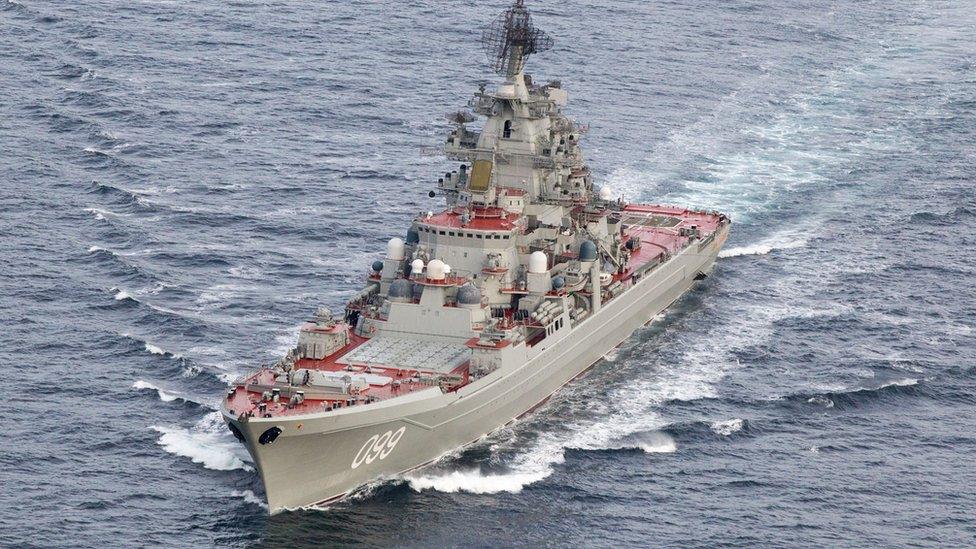
The Kirov-class cruiser Peter the Great is in the group heading towards Syria
This latest deployment is of a different order, comprising some of the largest warships in the Russian fleet. Leading the task force is Russia's sole aircraft carrier - the Admiral Kuznetsov - escorted by six other vessels. Chief among them is the nuclear-powered battle cruiser - Pyotr Velikiy (Peter the Great) a Kirov-class warship and the largest surface combatant (excluding aircraft carriers) in the world.
With it are two anti-submarine destroyers of the Udaloy class - the Severomorsk and the Vice-Admiral Kulakov. There are also four support vessels. It is likely that the flotilla will be joined by Russian submarines as well, which would typically help protect the carrier.
Nato monitoring
The Admiral Kuznetsov battle group will join some 10 other Russian vessels already off Syria.
These vessels have a long journey from bases of the Russian Northern Fleet. Their exact route is unclear, but they will either pass through the English Channel or to the west of Ireland. It is likely that the Admiral Kuznetsov will conduct some flight operations en route, as its air group works up to combat readiness.
The Russian warships' progress is being carefully monitored by Nato aircraft and ships.
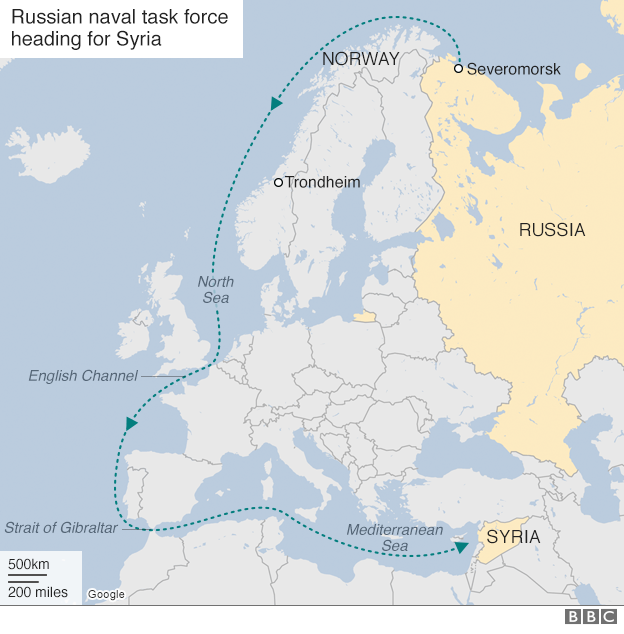
Tensions with the West are high. Diplomatic efforts to resolve the Syria crisis have so far failed. And there has been talk in Washington about exploring potential military options. Russian reinforcements help to consolidate its position and make Western military action probably unthinkable.
Russian air defences have been bolstered in Syria itself. And the additional Russian warships provide extra capabilities to counter air and submarine threats. The aircraft on board the carrier will also give Moscow more fire-power.
Plagued by problems
An added naval presence also serves to counter those in the West who have argued that a "no bomb" zone could be enforced by missiles fired from western warships in the Mediterranean. Russia is pre-emptively upping the naval stakes.
But the mighty presence of warships like the Admiral Kuznetsov and the Peter the Great is deceptive. These are rare outings for Russia's big ships. Indeed, this will be the aircraft carrier's first ever combat deployment. Both vessels have been plagued by problems. The 26-year-old Kuznetsov rarely goes anywhere without a naval tug just in case it breaks down.
It will also be the first combat test for its MIG-29K warplanes. Russian carrier-borne aircraft are launched not by catapult, as in the US Navy, but with a sort of ski ramp. This means they can carry less fuel and weaponry so it is likely that the Kuznetsov will have to cruise relatively close to the Syrian coast to mount air operations.
Any cynicism, though, should be muted. The fact that the Kuznetsov flotilla is on its way at all demonstrates that Russia is one of the few countries in the world that can deploy this kind of sea power.
When Russia entered the Syrian conflict there was a lot of speculation from Western experts that it would fall flat on its face, and that it simply did not have the capability to conduct this kind of expeditionary warfare.
Well, the Russians have proved those experts wrong.
They have shown that they are both innovative and capable. They have demonstrated their ability to strike with tactical aviation - long-range bombers, cruise missile-firing warships in the Caspian Sea and the Mediterranean - and to sustain a reasonable level of ground operations in support of the Syrian government forces too.
Their targeting policy and methods have provoked much criticism. But in terms of pure military capability, Russia's Syrian adventure has so far proved a success.
- Published18 October 2016
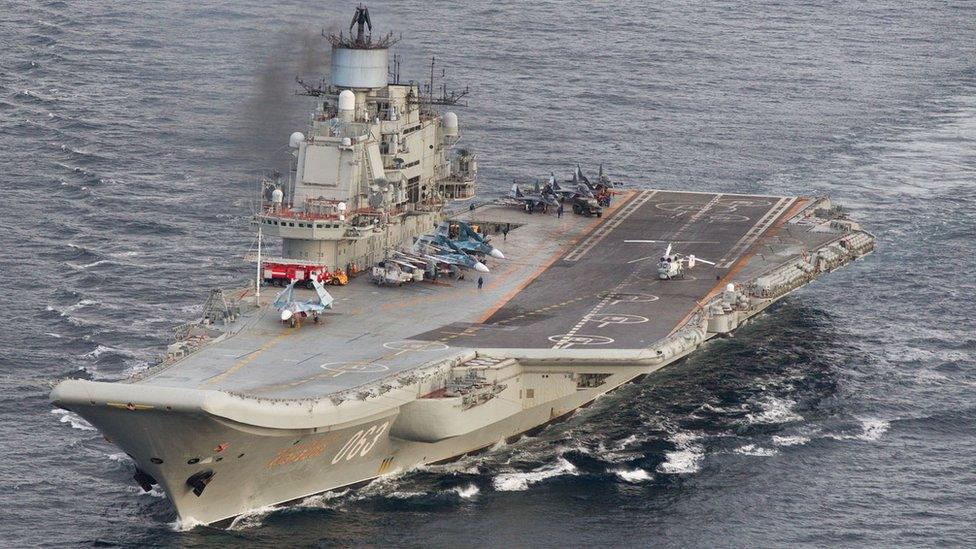
- Published17 October 2016
- Published18 October 2016
